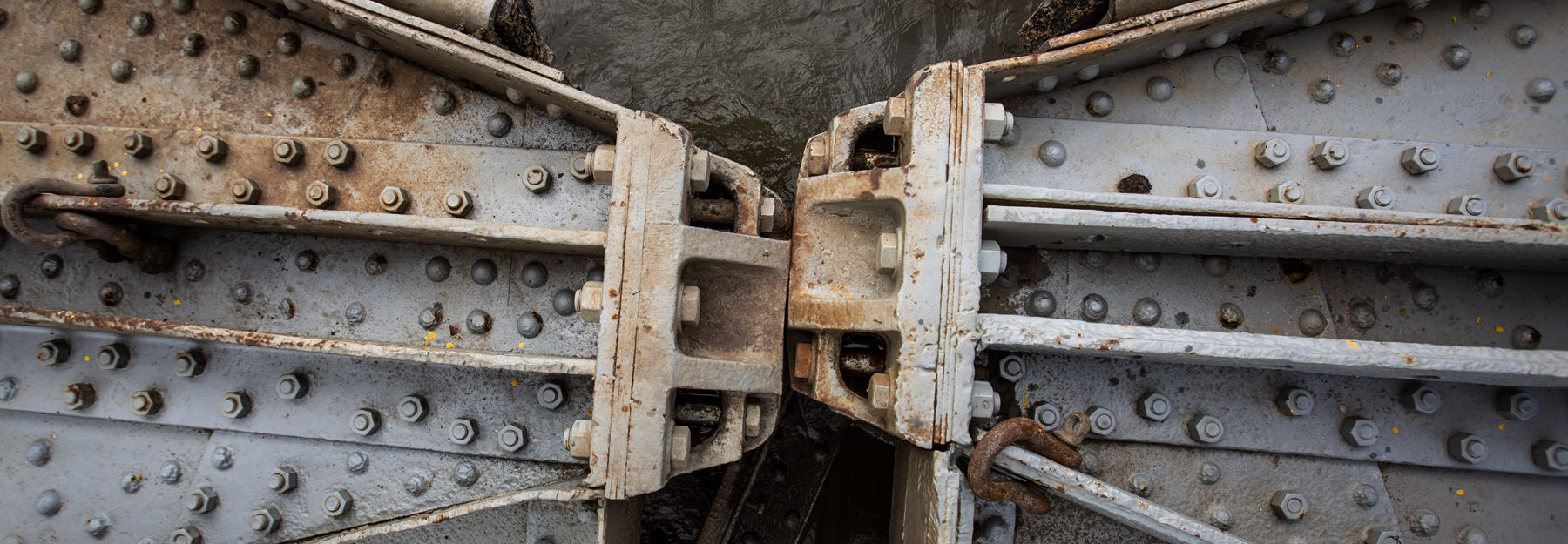
Infrastructure
Updated: November 6, 2023
What is infrastructure?
For U.S. soybean farmers, transportation infrastructure means all the systems and structures transporting their product to market. But the most important component, given the volume of soybean exports, is river travel. An intricate system of tributaries, barges, locks, dams, tows, ports and grain terminals delivers the nation’s grain and oilseed harvest to market.
Why is it important?
Nearly 60% of exported U.S. soybeans head to market via the Mississippi Gulf region, and inland waterways play a major role in delivering them. Every major Midwestern state has a river that flows into the Mississippi, which becomes a soybean highway after harvest.
River transportation — primarily done with massive barges — provides several advantages over other means of moving grain across the country. It is far less costly, relatively easy and efficient, more dependable and more sustainable. These advantages mean international soybean buyers can deliver sustainable soy to their customers in a cost-efficient and reliable manner.
But the rest of the world is slowly catching up. Brazil, which exports roughly the same amount of soybeans as the U.S., is investing heavily in its own water-based infrastructure. Keeping our advantage means modernizing our own systems.
Enter the soy checkoff. Recent checkoff-funded research demonstrated that dredging the Lower Mississippi to a depth of 50 feet (from the current depth of 45 feet) will permit barges to deliver an additional 500,000 bushels per ocean vessel, creating the potential for an additional $461 million in annual realized value for U.S. soybean farmers.
Additionally, the system of locks and dams that barges must navigate on the Upper Mississippi requires modernization and maintenance. Repairs are costly as much of it was built more than 50 years ago.
Consider Lock & Dam 25, located an hour north of St. Louis. It accommodates 200 million bushels of soybeans each year. According to Waterways Council, Inc., an outage at this single facility would cost $1.6 billion per year and would require an additional 500,000 truck trips to transport the same amount of grain.
What is happening now?
Investments from the checkoff led to significant projects, including:
- Dredging the lower Mississippi River, which will allow barges to deliver an additional 500,000 bushels per ocean vessel, creates potential to add $461 million in annual realized value for U.S. soybean farmers. More efficient shipping builds value in the supply chain and expands opportunities for our soybeans to reach our customers around the world. More here.
- Port of Grays Harbor Terminal 4 Expansion and Redevelopment Project will enable increased soybean meal exports from three to six million metric tons with expanded infrastructure. This investment is a vital piece of the puzzle because it has a direct route for going into Southeast Asia and other points in the Pacific Rim. More here.
- On the St. Lawrence Seaway, through a checkoff investment, helped enable an agreement to reduce freight tolls by 50 percent to incentivize greater use by soybean exporters and to diversify the transportation system. More here.
- Lock & Dam 25 was allocated federal funding to double its size (from 600 feet to 1200 feet) and modernize its operations. That work has already begun. When completed, the size capacity alone will substantially reduce the time spent navigating the lock. More here.
Key messages
- The soy checkoff played a critical role in the projects mentioned in this brief. USB and partner organizations funded feasibility and engineering studies that showed clear benefits, laying the groundwork for federal and state funding to follow.
- International soybean buyers prioritize predictability of delivery and price, both of which are impacted by transportation infrastructure on the Mississippi.
- Barge transportation delivers advantages on price, efficiency and sustainability for U.S. soybean farmers.
- USB prioritizes investments in infrastructure to keep U.S. soybean growers in a global leadership position while also benefitting transport of other commodities and agricultural inputs.
The checkoff’s investments to fund research, analysis and planning of infrastructure improvements provide substantial returns for U.S. soybean farmers.